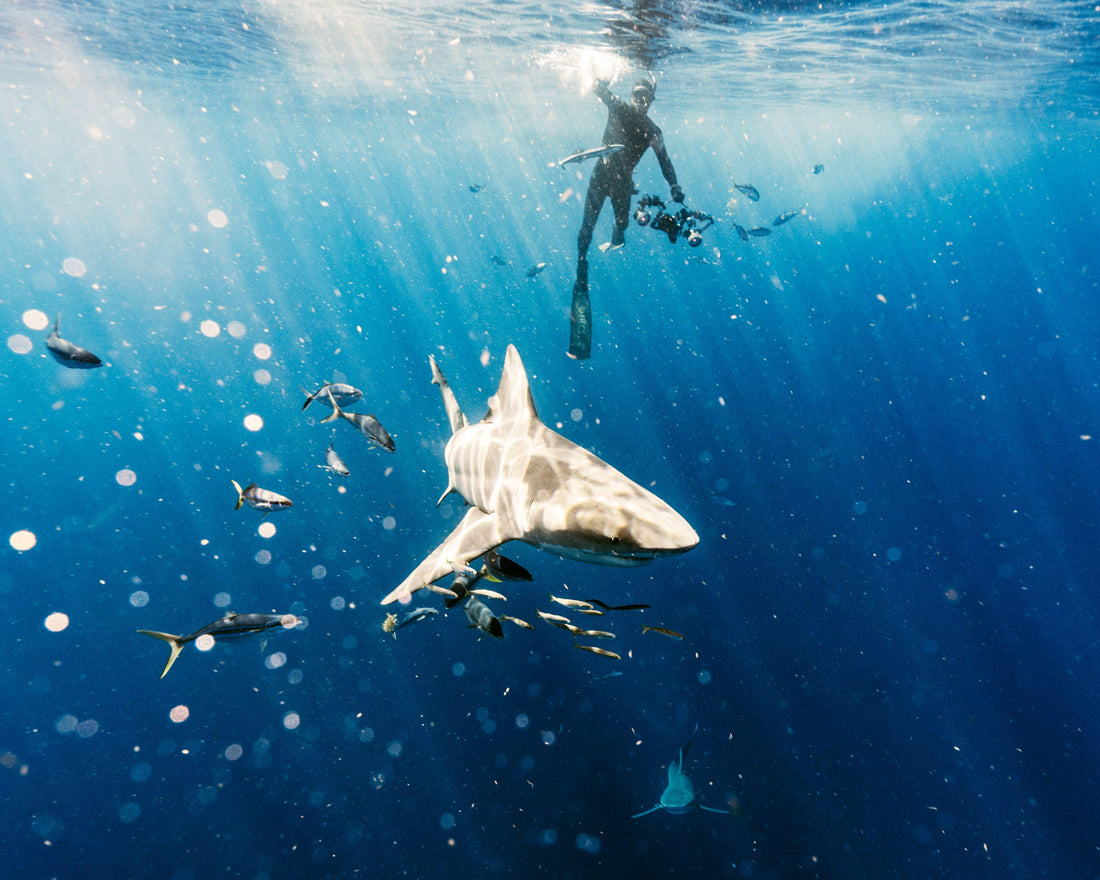
Top 5 dangerous sharks! | Scuba Diving in Goa
Top 5 sharks that are dangerous
The belief about which sharks are the most dangerous can change based on a number of variables, including the sharks' size, habitat, behavior, and past attack history. But because of their predatory tendencies and the possible harm they could cause to people, some sharks are frequently seen as being more dangerous than others.
The Carcharodon carcharias, or great white shark:
Habitat: Coastal seas worldwide, particularly those with significant densities of marine animals, are their principal habitat.
Behavior: As apex predators, great white sharks consume a wide range of marine life, such as seals, sea lions, and other sharks.
Danger: Because of the shark's size and powerful bite, attacks on humans are uncommon but can be quite serious when they do happen. Most human fatal shark attacks are carried out by great white sharks.
The Galeocerdo cuvier, or tiger shark:

Tiger sharks are distinguished from other shark species by the tiger-like stripes that run the length of their bodies. They have strong jaws full of sharp fangs and huge, blunt skulls.
Habitat: These sharks can be found in deeper waters, although they are primarily found in tropical and subtropical areas around the world.
Behavior: Tiger sharks have a reputation for having an enormous appetite and will eat a variety of food items, such as fish, birds, turtles, and even huge mammals like dolphins.
The aggressive attitude and opportunistic eating habits of tiger sharks make them one of the most deadly shark species to humans. They are to blame for a sizable number of shark attacks annually, frequently in locations where people are surfing or swimming.
Shark (Carcharhinus leucas): Bull shark

Features: Bull sharks have a broad, blunt snout and a robust build. They are recognized for their aggressive nature and unique gray coloring.
Habitat: Rivers, estuaries, and shallow coastal waters are common places to find bull sharks because they are the only shark species that can survive in freshwater conditions.
Behavior: Fish, turtles, birds, and other sharks are among their many food items. They are also opportunistic predators.
Danger: Because bull sharks can live in both fresh and saltwater, there is a greater chance that they will come into contact with people. For this reason, they are regarded as extremely hazardous animals. They are to blame for a good deal of unprovoked attacks, frequently in places where shark encounters are uncommon.
Shark, Carcharhinus longimanus, Oceanic Whitetip:

Features: The characteristic white-tipped dorsal fin and long, rounded fins are characteristic of oceanic whitetip sharks. They are stocky sharks that range in size from medium to giant.
Habitat: These sharks can be found in deep, open waters on oceanic islands all over the world, usually far from the coast.
Behavior: Carrion and leftovers from fishing boats are common foods for opportunistic scavengers like oceanic whitetip sharks. Additionally, live fish and rarely marine mammals have been reported as their prey.
Risk: Although historically not as well-known as some other species for attacking people, oceanic whitetip sharks have been connected to many occurrences involving downed aircraft or survivors of shipwrecks.
Isurus oxyrinchus, the shortfin mako shark:

Features: Mako sharks have a strong, powerful tail and a long, pointed snout that make them streamlined animals. Their undersides are white, while their backs are colored a metallic blue.Habitat: Shortfin makos inhabit deep ocean waters as well as offshore seas globally, most frequently in tropical and temperate zones.
Behavior: Makos can reach speeds of excess to 60 mph (97 km/h) in short bursts, making them exceptionally swift and agile predators. Their main food source is fast-moving animals like fish and squid.
Danger: Because of their speed and strong jaws, makos are regarded as hazardous even if their assaults on humans are not as often as those of other animals on this list. Most mako encounters take place in offshore seas, frequently involving divers or fisherman.
Even though these sharks are thought to be hazardous to people, it's vital to keep in mind that most contacts between humans and sharks are not threatening, and shark attacks are still comparatively uncommon. Lowering the chance of encounters can be achieved by being aware of shark behavior and using caution when diving or swimming in areas where sharks are present.

